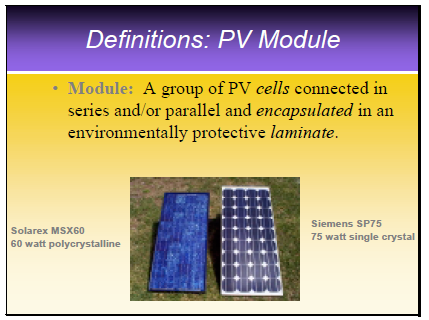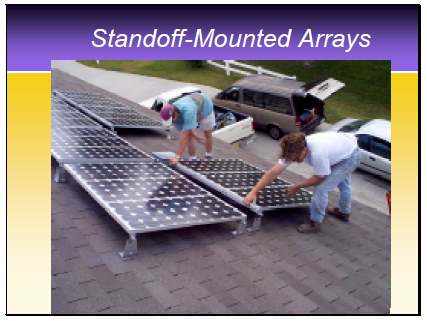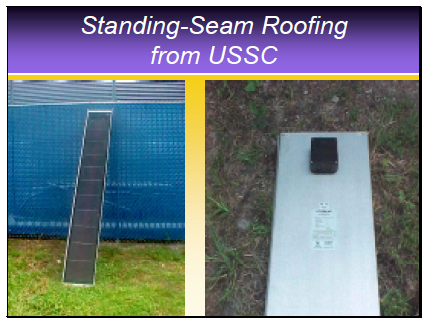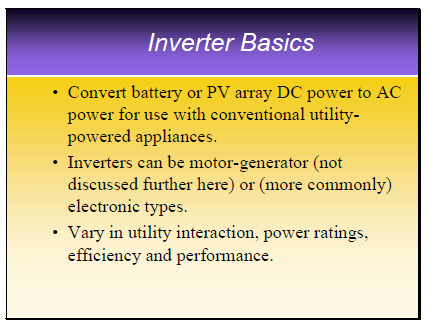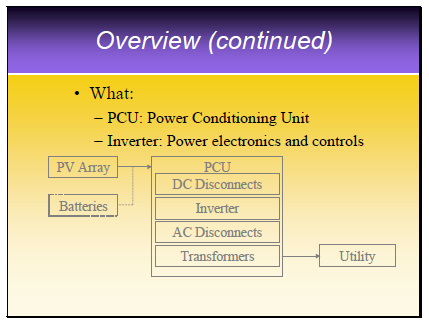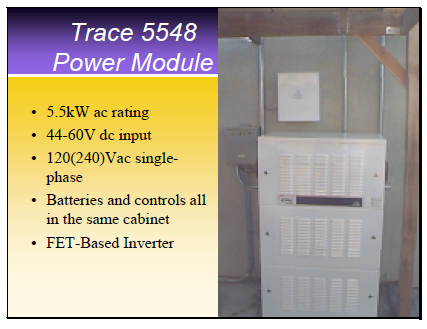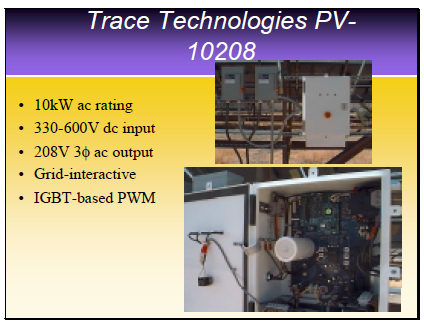Photovoltaic (PV) Tutorial
This presentation was designed to provide Million Solar Roof partners, and others a background on PV and inverter technology. Many of these slides were produced at the Florida Solar Energy Center and PVUSA as part of training programs for contractors.
Solar energy has more even distribution across the United States than other forms of renewables such as wind or hydro. Where wind and hydro are available, they are good sources of energy, but only select places get good wind, and hydro can have many impacts, whereas solar energy is spread out across the entire U.S. and has very little environmental impacts.
PV is very modular. You can install as small or as large a PV system as you need. Example: One can install a PV module on each classroom for lighting, put PV power at a gate to run the motorized gate-opener, put PV power on a light pole for street lighting, or put a PV system on a house or building and supply as much energy as wanted.
You can start with a small budget this year, and add more modules and batteries later when you are more comfortable with solar, or when loads increase. New PV modules can be added at any time.
The important point of this slide is that it emphasizes that there is another type of solar energy, solar thermal, that converts sunlight energy into heat. This workbook does not cover solar thermal. We are not concerned about the heat content of sunlight, PV cells and modules do not utilize the heat, only the light.
The element Silicon is the second most abundant element on the earth's surface, next to Oxygen
Silicon and Oxygen together make sand (Silicon Oxide, SiO2). The Oxygen is removed at high temperatures, and leaves behind the Silicon
So the basic material of solar cells is abundant and safe
Emphasize that the cells are converters, not original sources of energy. They need the sunlight as their fuel just like conventional motor generators need fuel to work. But solar cell fuel is delivered for free all over the world.
This is intended to be a quick explanation of the basics of direct solar conversion ("the photovoltaic effect"). This picture looks at a cross-section of a PV cell. Light actually penetrates into the cell, it doesn't just bounce off the surface. Particles of light called "photons" bounce into negatively charged electrons around the silicon atoms of the cell, and knock these electrons free from their silicon atoms. The energy of the photon is transferred to the electron. There are over a billion billion photons falling on the cells every second, to there are lots of electrons knocked loose! Each electron is pushed by an internal electric field that has been created in the factory in each cell. The flow of electrons pushed out of the cell by this internal field is what we call the "electric current".
As long as there is light flowing into the cells, there are electrons flowing out of the cells. The cells doesn't "use up" its electrons and loose power, like a battery. It is just a converter, changing one kind of energy (sunlight) into another (flowing electrons). For every electron that flows out the wire connected to the front of a cell, there is another electron flowing into the back from the other return wire. The cell is a part of a "circuit" (Latin for "go around"), where the same electrons just travel around the same path, getting energy from the sunlight and giving that energy to the load.
All modules contain cells. Some cells are round or square, while thin film PV modules may have long narrow cells.
Cells are too small to do much work. They only produce about 1/2 volt, and we usually need to charge 12 volt batteries or run motors. A typical module has 36 cells connected in series, plus to minus, to increase the voltage.
36 times 1/2 volt yields 18 volts. However, the voltage is reduced as these cells get hot in the sun and 12-volt batteries typically need about 14 volts for a charge, so the 36 cell module has become the standard of the solar battery charger industry.
With connected cells and a tough front glass, a protective back surface and a frame, the module is now a useful building block for real-world systems. The cells make up the module, and the modules make the power array.
If you need more than 12 volts, you can connect modules in series too.
If you need more than the current from one module, you can connect modules in parallel.
The PV module is the smallest package that produces useful power. The process involved in manufacturing these modules requires high precision and quality control in order to produce a reliable product. It is very difficult, and therefore not practical, to make homemade modules.
This is the most critical part of the module manufacturing process. It keeps out moisture and contaminants that cause PV modules to fail prematurely.
Panel is a term used for a group of modules that can be packaged and pre-wired off-site. The size of the panel (or large modules) is often related to how much weight and size two workers can effectively handle on a roof surface, such as you see here.
This array is made up of 8 panels, consisting of 3 modules each, for a total of 24 modules in the array. If the PV system has more than one grouping of PV modules, we call each grouping a sub-array. The total of all the sub-arrays is then called the complete PV array.
The standoff-mounted PV array is the most common type of residential roof-top installation. It is mounted above and parallel to the roof surface. It is located slightly above the roof for cooling purposes and is parallel to the roof for aesthetic purposes.
Two common methods of ground mounting PV systems are racks and poles. Some pole mounts may also have the ability to track the sun across the sky.
Another method of ground-mounting is a patio cover. This provides shade to the patio area without taking up valuable yard space. It also provides an alternative to roof mounting. This is especially important in areas where concrete or tile roofs are common since it can be very difficult and costly to roof mount to tile roofs.
Another example of a very attractive shade structure that is integrated into the home and dramatically improves the aesthetics of the home while providing both shade and solar electricity.
This is a three-tab PV roofing shingle product produced by UniSolar.
A close up view of the shingle
Some integrated products blend completely into the roof structure. The PV array is an integral part of the roof on the closest townhouse.
Close-up view of the PV roof
Each panel is a separate generating unit with convenient access to the wiring with a junction box located near the ridge of the roof.
Roof slates are very popular in Europe and are beginning to find there way into the U.S. market. This product replaces the slates on a typical roof.
A view of how this product is installed. This product requires more labor to install but integrates nicely with the rest of the roof.
The inverter is the heart of the PV system and is the focus of all utility-interconnection codes and standards.
This is meant to answer the "why's and how's" of PV inverters. Since the PV array is a dc source, an inverter is required to convert the dc power to normal ac power that is used in our homes and offices. To save energy they run only when the sun is up and should be located in cool locations away from direct sunlight.
The PCU is a general term for all the equipment involved including the inverter and the interface with the PV (and battery system if used) and the utility grid.
It is very important to point out that inverters are by design much safer than rotating generators. Of particular concern to utility engineers is how much current a generator can deliver during a fault on their system. Inverters generally produce less than 20% of the fault current as a synchronous generator of the same nameplate capacity. This is a very significant difference.
When the utility grid has problems, the inverter must detect these problems and not contribute to the problems.
Three basic classifications of inverters
There are several commercially available inverters on the market today. The following slides give some brief specifications on these inverters.
PWM stands for Pulse Width Modulation, a method of creating the ac sine wave from the dc input.






